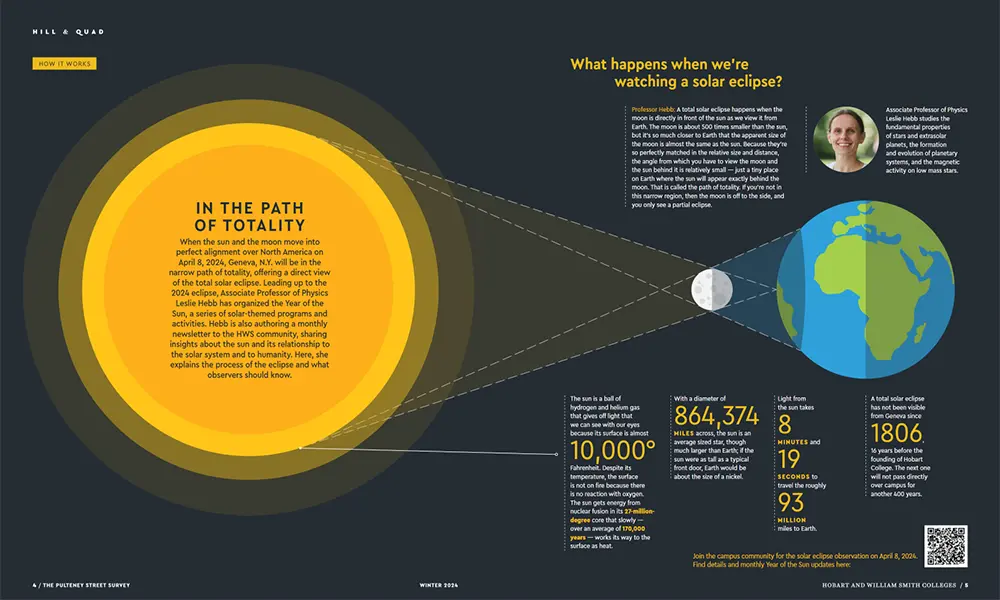The Pulteney Street SurveyWinter '24
Associate Professor of Physics Leslie Hebb studies the fundamental properties of stars and extrasolar planets, the formation and evolution of planetary systems, and the magnetic activity on low mass stars.
IN THE PATH OF TOTALITY
When the sun and the moon move into perfect alignment over North America on April 8, 2024, Geneva, N.Y. will be in the narrow path of totality, offering a direct view of the total solar eclipse. Leading up to the 2024 eclipse, Associate Professor of Physics Leslie Hebb has organized the Year of the Sun, a series of solar-themed programs and activities. Hebb is also authoring a monthly newsletter to the HWS community, sharing insights about the sun and its relationship to the solar system and to humanity. Here, she explains the process of the eclipse and what observers should know.
What happens when we’re watching a solar eclipse?
Professor Hebb: A total solar eclipse happens when the moon is directly in front of the sun as we view it from Earth. The moon is about 500 times smaller than the sun, but it’s so much closer to Earth that the apparent size of the moon is almost the same as the sun. Because they’re so perfectly matched in the relative size and distance, the angle from which you have to view the moon and the sun behind it is relatively small — just a tiny place on Earth where the sun will appear exactly behind the moon. That is called the path of totality. If you’re not in this narrow region, then the moon is off to the side, and you only see a partial eclipse.
The sun is a ball of hydrogen and helium gas that gives off light that we can see with our eyes because its surface is almost 10,000 degrees Fahrenheit. Despite its temperature, the surface is not on fire because there is no reaction with oxygen. The sun gets energy from nuclear fusion in its 27-million-degree core that slowly — over an average of 170,000 years — works its way to the surface as heat.
With a diameter of 864,374 miles across, the sun is an average sized star, though much larger than Earth; if the sun were as tall as a typical front door, Earth would be about the size of a nickel.
Light from the Sun takes 8 minutes and 19 seconds to travel the roughly 93 million miles to Earth.
A total solar eclipse has not been visible from Geneva since 1806, 16 years before the founding of Hobart College. The next one will not pass directly over campus for another 400 years.
Join the campus community for the solar eclipse observation on April 8, 2024. Find details and monthly Year of the Sun updates here.

